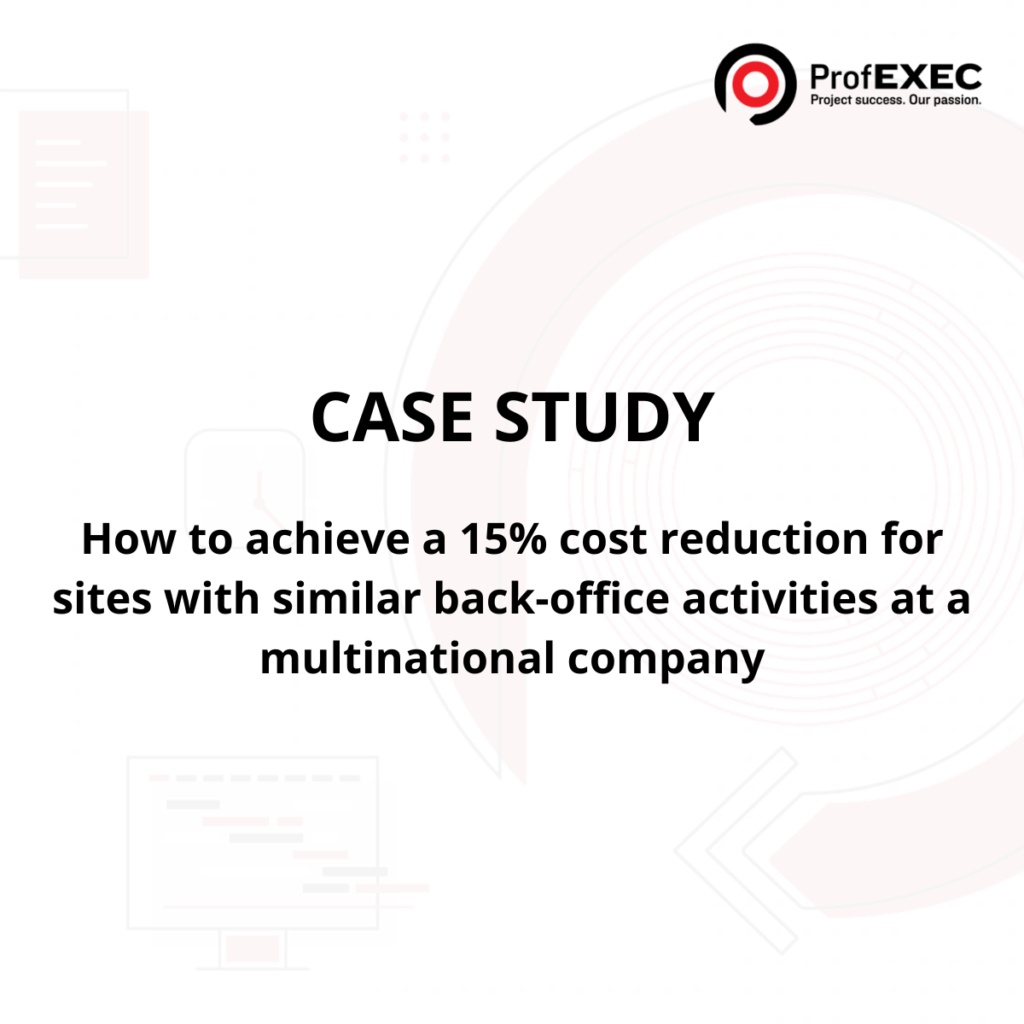Case Study : How to Achieve a 15% Cost Reduction for Sites with Similar Back-Office Activities at a Multinational Company
Case study conducted by: Kálmán Kovács, Roland Gulyás
Project Scope: Integration of the back-office card processing processes at sites in various countries for our multinational partner. This includes the standardization, automation, and centralization of the processes in each country.
Service: IT Project Management
Industry: Oil & Energy
Challenge:
Our partner provided corporate cards to their clients with fleets, allowing their employees to make easy but controlled payments for our partner’s services in different countries.
Our partner had back-office support for card processing in numerous countries. The goal was to create a unified system and processes across all countries and establish reconciliation centers.
With the establishment of standardized, unified processes, full automation became possible. The human resources freed up through this could enable the development of centralized operations and workforce rationalization.
The main challenge of the project was maintaining the optimal operation of business processes amidst organizational, procedural, and system changes.
Additional challenges included cultural, legal, and linguistic differences, as well as the existence of varied processes and background systems.
Additionally, the project required significant effort to manage the risks arising from the simultaneous standardization of the operational platform and the enhancement of service levels delivered to our partner’s clients.
Solution:
The project lasted 2.5 years.
The first step was mapping the ‘as-is’ processes in all countries, documenting every single step. They measured who did what, where, and how long each activity took. They identified country-specific peculiarities and tasks resulting from legal differences. This also provided an opportunity to understand the impact that introducing a standard process would have on the operation of a given site. Through multiple workshops, the ‘to-be’ processes were developed, considering the processes in place at the parent company, the level of automation, and country-specific needs.
Following this, a project roadmap was defined, which included a change management plan outlining the steps for organizational and procedural changes from a business perspective. An IT development plan was also created, detailing the tasks of IT and IT vendors.
Based on the above, a detailed project plan was prepared.
During a training session where the vendor demonstrated the new functionality (prototype) to the users, it became evident that not everything the business expected was included. This was due to changes in the business context and needs compared to when the initial scope was defined.
This caused a minor delay in the project’s execution. However, after defining the final business requirements and modifying the specifications, the project continued, with the timeline and cost plan revised accordingly.
Both an IT project manager and a business project manager were involved in the project. Their primary task was to ensure that both timelines proceeded in parallel as planned, allowing them to manage IT automation and organizational and process changes simultaneously.
Another challenge was organizing the work. Although working from home was permitted, it proved beneficial for the IT and business project managers to share a room, as this ensured optimal information flow.
The project used a hybrid methodology: IT development followed agile methods, but the overall project was planned and managed in a waterfall approach.
Result:
The project’s success was measured in part by the savings achieved in human resources needed to operate the processes.
Additionally, from a business perspective, the standardization and automation were completed, and the centralization of back-office processes in the designated country was also accomplished.
Furthermore, our partner’s clients’ satisfaction increased due to new services that significantly reduced their administrative burden (e.g., bulk card orders, digital invoicing).
Value/Lessons Learned:
Through the project, our partner gained the following:
Use of process and task documentation methodology for other integration projects. Additionally, the design of a unified process instead of country-specific processes, considering central practices and expectations while incorporating local specificities.
The importance of clarifying and validating the project scope in a timely manner, which is critical for the project’s success. If entering the project as a service provider later, this must be done immediately, even if it is claimed that it has already been completed.
Planning the sequence of development steps to avoid additional risks: standardization and automation should be executed first, along with the associated organizational changes, followed by further modifications in terms of additional organizational changes and the introduction of new functions.
Understanding and applying the limitations and effects of linguistic and cultural differences when designing processes and organizational operations.
Establishing a unified baseline across different processes to improve the measurement of project KPIs in the future.



